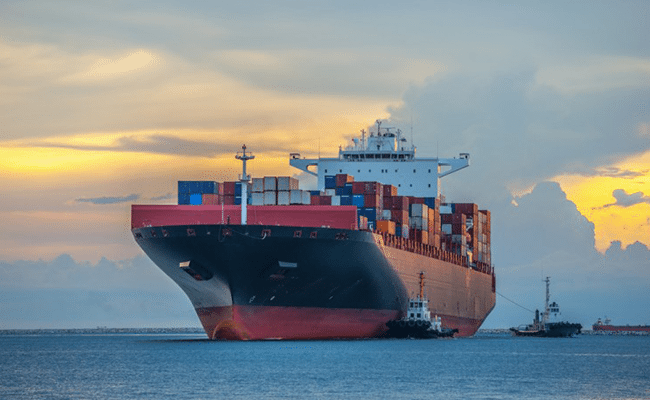Shipping container traffic that had been severely congested during the pandemic is clearing and shipping prices are falling by a record margin in a sign that snags that had bedeviled global supply chains are finally easing.
According to Nomura Research Institute, the number of container vessels waiting offshore of the Port of Los Angeles-Long Beach has declined from more than 100 in January — when it was at its highest — to less than 10.
The ship traffic jam at West Coast ports began in late 2020 due to the spread of COVID-19. Port workers, as well as the truck drivers that transport containers inland, were in short supply, greatly reducing the capacity to handle loads. Ships were forced to wait offshore.
The backlog worsened from summer last year, when it took about 30 days to ship from Asia to the West Coast, two to three times longer than usual.
The longer the voyage takes, the fewer vessels are available, and the world’s overall transport capacity is reduced. Traffic jams were also occurring at ports on the U.S. East Coast and in Europe, creating disruptions in maritime logistics that became a major factor in global supply constraints.
Rates are also falling. Shipping a container from Shanghai to the West Coast cost $3,959 in the first week of September, down 23% from the previous week. This drop was more than $1,000, the largest since 2009 when such statistics first became available.
U.S.-China rates serve as the international benchmark, so prices on other routes are also falling. Shipments from Shanghai to the port of Rotterdam in the Netherlands and elsewhere in Europe have also fallen 45% since the beginning of the year.
Measures of global supply chain disruption index are improving as well. The New York Fed’s Global Supply Chain Pressure Index has fallen four consecutive months through August and is now at its lowest level since January 2021, just before the supply chain problems became serious.
“The August decline was quite broad-based, with decreases in delivery times recorded for all the countries,” the Fed noted.
Container shipping is not the only supply chain factor improving. The semiconductor shortage, which had hindered automobile production, has also improved. Four major suppliers, including Japan’s Renesas Electronics and Germany’s Infineon Technologies, have built up inventories of automotive semiconductors to an average of 3.48 months in the April-June quarter, almost on par with the 2019 average of 3.51 months before COVID-19 hit.
Normalcy, however, has not entirely returned. The index is declining, but it is still higher than it was before the pandemic. The same is true for container rates. Although falling, they are still double the pre-pandemic level.
The easing of the maritime logjam is also due in part to the decline in housing markets as a result of monetary tightening in the U.S., which has boosted mortgage rates. According to the U.S. Department of Commerce, housing starts in July were down 9.6% on the month. Sales of existing homes compiled by the National Association of Realtors also declined for the sixth consecutive month in July.
Container ships are used to transport furniture, appliances and other goods. Furniture and appliances account for about a quarter of the cargo from Asia to the U.S., according to Takuma Matsuda, a professor who specializes in maritime shipping at Takushoku University in Tokyo.
“Inventories of furniture and other items are increasing in the U.S. Maritime logistics is entering a new phase,” he noted.
A European shipper said, “Demand has been falling since around August. Even if you lower your rates and market them, there are no goods to carry.”
Maritime shippers ordered large numbers of new vessels as the market boomed during the pandemic. According to Clarkson Research, an U.K. research company, new orders for container ships in 2021 was 4.2 times higher than the previous year, marking the first time in 14 years that a record has been set.
Since those ships will not be completed until 2023 or later, a shipping recession could return if a drop in demand comes just as a large number of vessels enter service.
Source: Hellenic Shipping News






